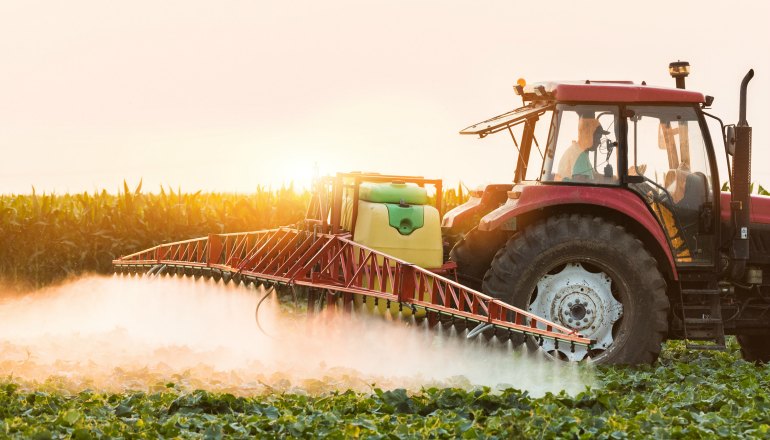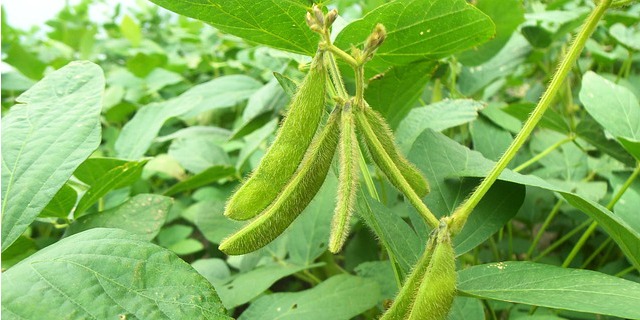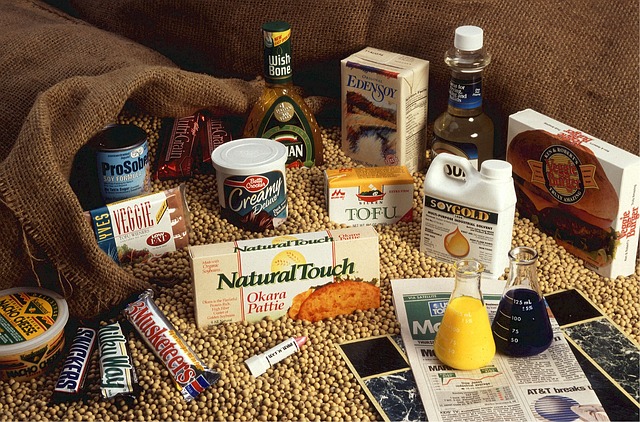
If you’re confused about soy, you’re not alone. There has been a lot of mixed information about soy over the years. Some sources tell us that it is good for us and others say that it is bad.
The truth is, as with so many other foods, soy is both good and bad for you depending on how it is grown and processed.
Let’s take a closer look at how modern soy products are created, the many ways you may be consuming far more soy than you realize, and how not being picky about your soy can have a very real (and very negative) impact on your health.
The Difference Between Asian Soy and American Soy
For centuries, Asian cultures have been enjoying soy products and have promoted their benefits. According to a World Health Organization study from 2016, Japanese people overall live the longest, in particular the women, who have an average lifespan of 86.8 years.1 Unfortunately, Americans did not even make it into the top twenty on that list of longest-lived culture.
The Japanese and other Asian cultures, such as those in Hong Kong and Singapore, not only live the longest but their quality of life is better with lower incidences of heart disease and cancer. The Japanese have attributed their long lifespan to a healthy diet full of fermented soy foods like natto and miso, green tea, ginger, and numerous herbs, coupled with minimal amounts of meat and dairy.
Americans don’t enjoy these same health benefits of soy mostly because the soy products available in the United States have been grown and processed in a very different way. The way foods are grown and processed makes a huge difference in whether or not they are healthy for our bodies. As with corn, as much as 90% of soy produced in the U. S. comes from genetically modified crops.2

The Potential Problems with GMO Soy
Genetically modified organisms, or GMOs, are plant or meat products that have had their DNA altered by genes from other plants, animals, viruses, or bacteria. This is vastly different from cross-breeding or selective breeding, whereby one plant or animal is paired with another for a particular outcome. Genetic engineering, or GE, is not a natural process. It occurs in labs where the DNA of one organism is pulled apart or spliced up and introduced into a completely different organism.
In the United States, the majority of our staple crops, such as sugar, corn and soy, are genetically modified (and unauthorized GMO wheat has been discovered in multiple states, as well).3 Most of the GMO food grown in the U.S has been modified to withstand the spraying of Monsanto’s Roundup herbicide while surrounding weeds die. The bio-tech giants claim there are no significant long-term risks, but many health experts disagree.
The active ingredient in Roundup is glyphosate, and Dr. Stephanie Seneff, a research scientist at the Massachusetts Institute of Technology, revealed how glyphosate can wreak havoc on human health. Two key problems caused by glyphosate in the diet are nutritional deficiencies and toxic overload.4

Monsanto claims that Roundup can’t affect humans since the glyphosate uses a specific pathway to do its work in plants, not animals. However, according to Dr. Seneff, glyphosate affects humans and animals through the pathway of bacteria.
Since bacteria is present everywhere, we can all potentially be affected by this toxin. That is the key to understanding how glyphosate causes such widespread systemic harm in both humans and animals. Dr. Seneff believes that glyphosate exposure is a major contributing factor to a myriad of disorders ranging from irritable bowel syndrome, to cancer, to autism, to asthma, to infertility.4
So, given all that, let me simply say this again: 90% of soy produced in the US comes from genetically modified crops.
The Many Ways You’re Already Eating Soy
The majority of Americans consume a lot more soy than they realize. Consider what you consume each day that contains “hidden” soy:
- Soy lecithin: Soy is found in a variety of products as soy lecithin, which acts mostly as an emulsifier to mix water and oil together. Soy lecithin is found in everything ranging from creamy salad dressings to spreads, dips, breakfast cereals, and even chocolate. Because soy lecithin also acts as a stabilizer, it increases the lifespan of foods, so you will also see it added to baked goods such as muffins, biscuits, and crackers.
- Soybean oil: Soybean oil is a very common food ingredient, and typically appears as a partially hydrogenated oil that increases the shelf life of products. You will see soybean oil in many salad dressings as well as coffee creamers, dips, and spreads.
- Soy protein isolate: Most protein bars, drinks, and meal replacement contain soy protein isolate as their main source of protein. Many baby formulas are also made with soy protein isolate.
- Textured vegetable protein: Popular meat substitutes like tofu burger patties and tofu bacon are made from textured vegetable proteins (TVP) which is derived from soy protein isolate.
Other soy products that we consume regularly and are more aware of are soy milk, soy yogurt, and other dairy substitutes, as well as soy sauce and tofu. So, what’s the problem with consuming all this soy?

The Soy You’re Eating Is Not the Soy You Think It Is
As discussed, the majority of the soy we are consuming in the United States mostly comes GMO crops, which we have established don’t seem so good for us. In addition, the form of soy we are consuming (and perhaps not even aware of) is often in the form of soy protein isolate, which is highly processed.
Here is a brief rundown of how soy protein isolate is made in the typical factory:
- Soybeans are first mixed with an alkaline solution to remove fiber, then precipitated and separated using an acid wash. This all takes place in huge aluminum tanks.
- During this heating process, a toxin called lysinoalanine is formed. Lysinoalanine is an unusual amino acid thought to cause kidney failure in rats.5
- The curds that result from this process are spray-dried at high temperatures to produce a high-protein powder. Nitrites are formed during this spray-drying process. It is believed that nitrites can react with certain amine-containing substances found in food to form nitrosamines, which are known to be potent cancer-causing chemicals.6
- To produce TVP, the final step involves even more high-temperature, high-pressure extraction of the soy protein isolate.
- To top off this chemical cocktail, numerous artificial flavorings such as MSG are typically added to soy protein isolate and TVP products to mask their strong beany taste and to make them taste more like meat or whatever product the manufacturers are attempting to replicate.7
In summary, the soy most of us are consuming in our protein bars, tofu burger patties, and baby formula comes from genetically engineered sources that have been denatured, acidified, alkalized, stripped of fiber, and loaded with chemicals and additives — making the end-product so far removed from its original form that it is hardly soy at all.
How Fermented Soy Counteracts the Problems Inherent to Soy
Of course, not all soy is created the same, and traditional fermented soy products, made from non-GMO and organic soybeans, have been shown to have health benefits. For example, one of the biggest upsides of fermented soy is that the fermentation process creates probiotics. These are “good” bacteria that aid in digestion and help to boost the immune system.
Another big difference between fermented and non-fermented soy is that non-fermented soy products (such as regular soy milk, soy yogurt, or non-fermented tofu) contain phytic acid. Phytic acid is a substance that can block the uptake of essential minerals — calcium, magnesium, copper, iron, and especially zinc — in the intestinal tract and this can lead to nutritional deficiencies.
Fermented soy, on the other hand, is known to stop the effect of phytic acid and increase the availability of isoflavones.8 The fermented soy products that mitigate the effects of phytic acid and are loaded with probiotics that are most popular in the Asian cultures are natto, miso, tempeh, and fermented tofu.

A Note About Isoflavones
Isoflavones are a type of phytoestrogen mostly found in soy and red clover. There has been much debate about phytoestrogens and whether they are good or bad for us. Basically, phytoestrogens affect the body by attaching to estrogen receptors. They have the ability to both mimic estrogen and act as an estrogen antagonist (estrogen blocker).
Most of us don’t need any more estrogen in our system due to the overload of synthetic estrogens in our society through substances such as PCBs, commonly used as lubricants and coolants, and BPA, used in certain plastics. Too much estrogen can cause endocrine disruption and has been linked to the early onset of puberty, infertility, and some cancers.9
With that said, estrogenic compounds such as soy isoflavones have been shown to have some health benefits for menopausal women who have lowered levels of estrogen. It may help to regulate their levels during this time of rapid change, improving heart health and reduce symptoms such as hot flushes.10
The Conclusion on Soy
When it comes to soy, there are a few factors we need to consider when evaluating if it is beneficial or detrimental to our health. My personal choices about soy, based on extensive reading and research, can be summed up in the following:
- Although the jury is still out on the effects of phytoestrogens found in soy, I think we can conclude that consuming soy from genetically engineered crops isn’t good for us.
- Soy products in the United States mainly come from genetically modified crops that can withstand herbicides that may end up in our systems and I choose to avoid that.
- On a bigger level, I prefer not to risk any long-term side effects of consuming GMOs of which we are not yet aware.
- The majority of soy added to our foods as oils and lecithins don’t pass my personal health test due to their high levels of processing. Soy products made from soy protein isolate and textured vegetable proteins are also highly suspect due to their processing methods.
Fermented soy products are a much healthier option as long as they come from organic, non-GMO sources. We can treat ourselves without worry to some miso, natto, or fermented tofu now and then, but stay clear of other soy products. In being picky about our soy consumption, hopefully we can enjoy some of the anti-aging and health benefits that the Asian cultures do.
References:
1. “Life expectancy increased by 5 years since 2000, but health inequalities persist,” World Health Organizations, May 19, 2016
2. “Top 7 Genetically Modified Crops,” Margie Kelly, October 30 2012
3. Pys Org, “GMO Corn, Soybeans Dominate the US Market,” June 4, 2013 by Veronique Dupont,
4. “Monsanto’s Roundup Herbicide May Be Most Important Factor in Development of Autism and Other Chronic Disease,” June 9, 2013
5. “Dehydroalanine”
6. “Nitrate and Nitrite: Health Information Summary,” New Hampshire Dept. Of Environmental Services
7. “Newest Research on Why You Should Avoid Soy,” By Sally Fallon & Mary G. Enig, Ph.D.
8. “Soy Bad, Soy Good, The Plusses of Fermented Soy,” Dr Mercola, August 4, 2004
9. “Environmental Chemicals and Estrogens,” by Sherilyn J. Sawyer, Department of Biology, Boston University
10. “Are Phytoestrogens good or bad for you? Separating Fact From Fiction,” Dr Axe



































